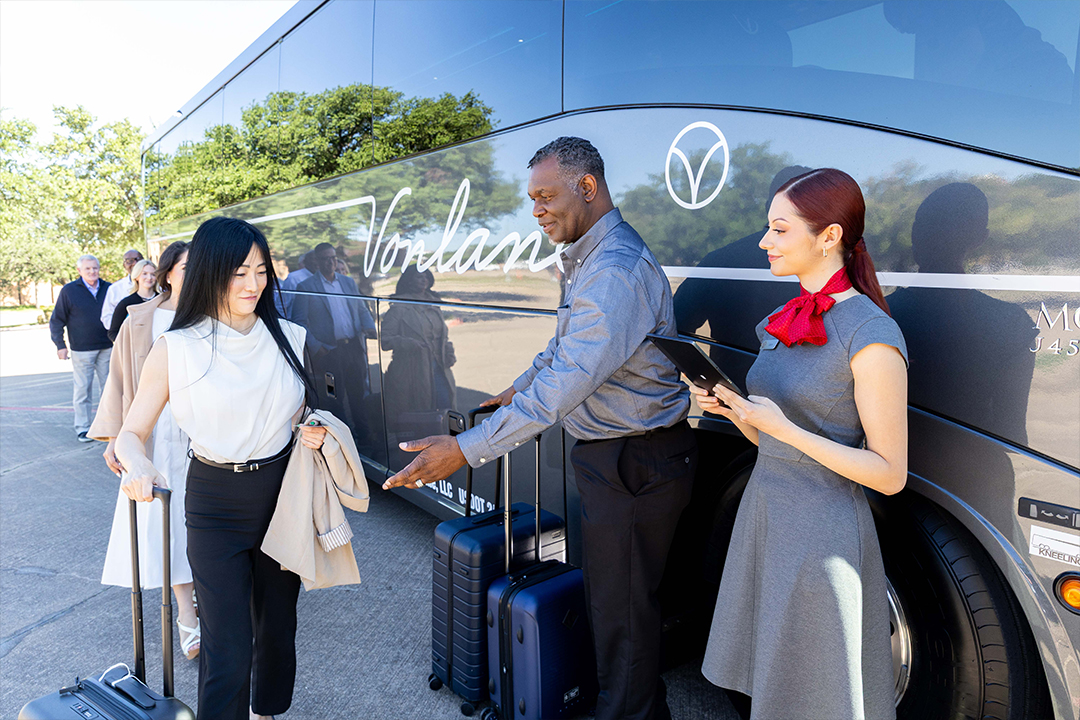
America’s cities are running out of space. As populations grow and downtown cores fill in, the traditional approach to transportation infrastructure no longer holds. The old method of building bigger, heavier, and costlier facilities has hit a ceiling. Meanwhile, regional travel demand continues to rise, especially in states like Texas, Georgia, and Tennessee. The real challenge is not moving people across vast distances. It is figuring out how to move them smoothly, affordably, and comfortably without adding more stress to city infrastructure.
This is where Vonlane comes in. Founded in 2013, the Texas-based transportation company is not just running a bus service. It is offering a lesson in how cities and businesses can rethink capacity through creative use of existing assets. What Vonlane does is deceptively simple. It connects major cities with a fleet of high-end motorcoaches, using hotel lobbies instead of terminals. On the surface, this might seem like a customer experience choice. In reality, it is a model that solves for a much larger issue. It is infrastructure without construction. It is expansion without disruption.
The Problem Cities Don’t Know How to Solve
In most fast-growing cities, infrastructure projects take years. Trains, terminals, and highway expansions are expensive and politically sensitive. Even when funded, they face public opposition and environmental delays. By the time a project breaks ground, the population it was meant to serve has already outgrown it.
Planners know this. Mayors know this. So do transportation officials. But no one has a perfect answer. That’s because most solutions rely on adding physical infrastructure: rails, buildings, overpasses, platforms. These are hard to scale. They also require coordination across multiple agencies and zoning boards.
Vonlane, on the other hand, operates in that middle space where the private sector can move faster and fill a gap. Instead of lobbying for new terminals, the company creates travel corridors by partnering with hotels. Instead of asking the city for land, it uses what already exists. The result is a flexible, low-friction way to increase regional travel capacity without creating new congestion.
What Elastic Infrastructure Actually Looks Like
Elastic infrastructure refers to systems that can stretch and respond to demand without permanent physical expansion. Think of mobile medical units during a health emergency. Or temporary fulfillment centers set up during peak shopping seasons. These services scale up and down based on real-world conditions.
Vonlane follows the same philosophy. Their coaches run fixed routes, but their footprint in each city is minimal. The company does not require dedicated buildings or parking facilities. Instead, passengers board at upscale hotels that already have space, amenities, and staff. These hotels act as modular terminals. They do not need to be redesigned or repurposed. They simply offer a well-lit, professional, and convenient place to begin and end a journey.
This model allows Vonlane to enter new cities without waiting for infrastructure to catch up. If demand grows between Atlanta and Nashville, for example, the company does not need to build anything new. It only needs to add departures, lease more coaches, and deepen its hotel partnerships. That is what makes the system elastic. It grows with need, not speculation.
Capital Efficiency and Operational Control
From a business standpoint, this is a smart structure. Traditional transportation companies carry heavy capital costs. They invest in terminals, own large lots, and often require government involvement to secure locations. All of this ties up money and reduces speed to market.
Vonlane avoids those traps. The company’s primary assets are its vehicles and service model. By keeping infrastructure outsourced to hotels, it lowers overhead and redirects focus toward passenger experience. The result is a leaner operation with more flexibility. It can respond to market trends, pilot new routes, or pause underperforming ones without major loss.
There is also an advantage in consistency. A hotel lobby in Austin or Memphis offers a better boarding experience than most public terminals. These environments are quieter, safer, and more inviting. Travelers get to wait in a space designed for comfort rather than throughput. That kind of detail reinforces the brand while keeping infrastructure spend low.
Public Implications and Planning Lessons
What Vonlane has done holds lessons for public planners and city governments. Many metro areas are currently wrestling with how to expand transportation access without overextending budgets or disrupting neighborhoods. The traditional answer has been to go big. Build new transit hubs. Launch major rail projects. Add park-and-ride facilities on the city outskirts.
But big moves come with big costs. They take time and often create resistance from the communities they aim to serve. Vonlane shows that there is another way. By embedding mobility into commercial and hospitality spaces, cities could offer more choice to regional travelers without expanding roads or building new terminals.
There are limits, of course. Not every service can function this way. Urban mass transit needs high volume infrastructure. Freight and logistics require their own systems. But for regional passenger travel, especially at the executive or professional level, this hybrid approach is effective and replicable.
The Future of Private Infrastructure
Alexander Danza, Vonlane’s founder, is not a typical tech disruptor. He did not set out to replace public transit or overhaul mobility from scratch. His approach is closer to infrastructure strategy than startup culture. By looking at how people actually travel and what environments they trust, he built a model that solves for comfort, cost, and scale all at once.
What makes Vonlane stand out is not just the seats, the service, or the coach interiors. It is the way the company uses space. It builds mobility into places people already go. It works with the grain of the city rather than pushing against it. In doing so, it creates capacity in a system that desperately needs it, all without the noise and resistance of traditional expansion.
That approach may not make headlines, but it works. And as more cities look for ways to stay flexible in the face of rapid growth, models like Vonlane’s will only become more relevant.
